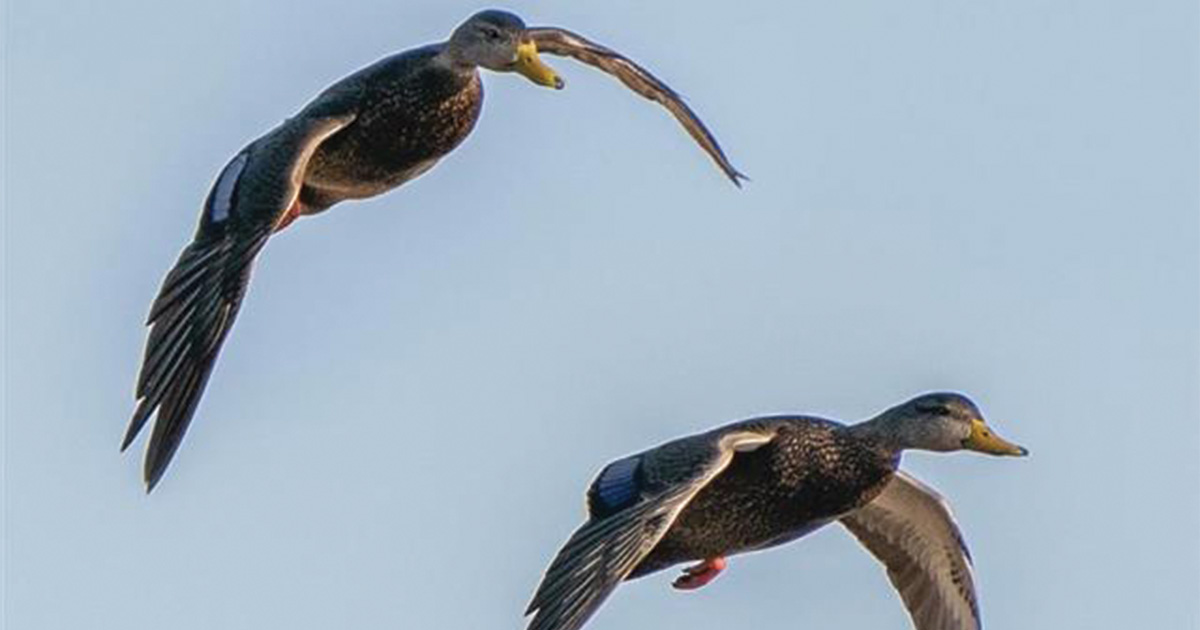Migration Alert: New York Waterfowl Hunters Optimistic as Habitat Conditions Improve
Oct. 29, 2025 – Atlantic Flyway – New York
Oct. 29, 2025 – Atlantic Flyway – New York

As October winds down, New York’s waterfowl season has delivered a blend of strong, early action and challenging conditions. While dry weather has shaped the landscape across much of the state, hunters from northern, western, and southeastern regions are reporting solid mixed-bag success, exceptional wood duck numbers, and the first signs of major migrations.
Hunters across northern New York have faced historically low water levels this season. Creeks have remained barely navigable, while many marshes are almost completely dry. Despite these challenges, the drought has concentrated birds into remaining waterways, producing productive hunts for those able to adapt.
“The creeks had enough water to paddle and hunt, but the marshes were basically land,” reports Ryan Chelius, Field & Stream senior editor. “That helped because it concentrated the birds. We had some great shoots consisting mostly of wood ducks, which were probably 90 percent of what we took.”
Black ducks and mallards made occasional appearances, with each species adding a few birds to the bag. However, the overwhelming story in the northern portion of the state has been the sheer abundance of wood ducks.
“I’ve never seen so many wood ducks,” Chelius says. “Some mornings there were hundreds.”
Chelius expects a cold front approaching at the end of October to push the wood ducks out and usher in fresh flights of mallards, black ducks, and other hardier species. A few early divers—redheads and bluebills—have already been reported on larger waters.
While some recent rainfall may have improved water levels, conditions remain well below normal. Continued precipitation and cooler weather will be key to sustaining migration momentum into November.
Farther west, hunters have enjoyed a strong early season marked by good shooting and consistent bird movement.
“Our season so far has been excellent,” says Nick Petrou of Natural Outfitters. “We’ve had a lot of great hunts with pintails, teal, and wood ducks, and now we’re starting to see more mallards coming through.”
The region saw a noticeable exodus of early migrants last week, particularly teal, although a few remained in sheltered areas. Wood ducks are still around, but mallards and black ducks now dominate most bags. “There are definitely more black ducks now than there were a week ago,” Petrou adds.
The first wave of diving ducks has also been spotted moving into the Finger Lakes and along the Lake Ontario shoreline. “We’re seeing redheads, bluebills, buffleheads, and even some goldeneyes starting to show,” Petrou says.
Adding to the excitement, an unusually early flight of brant was observed on eastern Lake Ontario. “I saw two to three hundred brant today,” Petrou reports. “They weren’t highflyers either; they looked like they were settling in for a couple days. Usually, we don’t see big numbers for another couple of weeks.”
Goose numbers are climbing steadily across western and central New York. “Every day there are more geese pushing through,” Petrou says. “Fields near my house have had five or six hundred birds.”
Most are Atlantic Population (AP) Canada geese, with heavy concentrations noted across agricultural corridors from the Finger Lakes to the Lake Ontario Plain. Hunters traveling from Ithaca northward are reporting fields full of feeding birds, even on sod fields.
Conditions in the Southeastern Zone have mirrored much of the state, with moderate drought limiting water availability and access. According to Larry Seaman, a waterman that has been hunting Orange County for more than three decades, hunters faced a tough opener this year.
“The opening split in the southeast was tougher than last year because of the drought,” Seaman says. “Low water made it hard to reach some spots, but where there was water, there were ducks—mainly woodies and teal, with a few mallards and black ducks mixed in.”
The Hudson Valley bird numbers in the area appear strong.
“There are a great number of geese around, but not many guys are setting up for them,” Seaman explains. “Most hunters are waiting for the second duck season to reopen so they can target geese as bonus birds.”
Seaman expects the second season to bring improved hunting opportunities.
“We’ve lost a lot of the smaller ducks like woodies and teal,” he says. “But big duck numbers have really grown. If we keep getting rain over the next couple of weeks, everything points to a great second opener.”
With improving water levels and a series of cold fronts on the horizon, conditions are aligning for an excellent second half of the waterfowl season across the Empire State.
Stay up to date with the latest migration information.
Ducks Unlimited uses cookies to enhance your browsing experience, optimize site functionality, analyze traffic, and deliver personalized advertising through third parties. By continuing to use this site, you agree to our use of cookies. View Privacy Policy